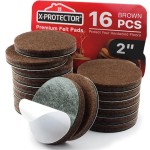How to Make Cats Not Scratch Furniture
Cats scratching furniture is a common problem for cat owners. Scratching is an instinctive behavior for cats, a natural part of their grooming routine and a way to mark their territory. However, this behavior can be a source of frustration for owners, as it can damage furniture and cause unsightly scratches. Fortunately, there are several effective methods for deterring cats from scratching furniture.
Provide Suitable Scratching Posts
The key to preventing cats from scratching furniture is to provide them with appropriate alternatives. Cats need to scratch for several reasons, including sharpening their claws, stretching their muscles, and marking their territory. By providing a scratching post, you are giving your cat a safe and acceptable outlet for their instinctive scratching behavior.
When choosing a scratching post, consider the following factors:
- Material: Cats prefer materials like sisal rope, cardboard, or wood. Sisal rope is particularly durable and long-lasting, while cardboard is a more affordable option.
- Height: Cats prefer scratching posts that are tall enough for them to fully stretch out. A scratching post that is at least three feet tall is ideal.
- Stability: The scratching post should be sturdy and stable, otherwise, your cat may knock it over.
- Location: Place the scratching post near areas where your cat frequently scratches furniture. It should be easily accessible and in a high-traffic area.
Encourage your cat to use the scratching post by rubbing catnip on it, placing treats near it, or praising your cat when they use it. You can also try placing the scratching post next to a piece of furniture that your cat has been scratching and gradually moving it away over time. This will help your cat associate the scratching post with positive experiences.
Redirect and Manage
In addition to providing suitable scratching posts, redirecting and managing your cat's behavior can also be effective. Consider these strategies:
- Distraction: When you see your cat scratching furniture, distract them with a toy. A laser pointer, feathered toy, or interactive toy can be effective in diverting their attention away from the furniture.
- Positive Reinforcement: Reward your cat when they use the scratching post. This can be done with verbal praise, treats, or petting.
- Negative Reinforcement: Use a deterrent such as a spray bottle filled with water to discourage scratching. Whenever your cat scratches the furniture, give a firm “No!” and spray them with water. While this method might be effective, it should be used sparingly and in conjunction with other strategies. Harsh or inconsistent punishments can cause anxiety and fear in cats.
- Cover Furniture: If you have a particular piece of furniture that your cat loves to scratch, consider covering it with a cat-friendly material like a blanket or a piece of fabric. This will make the furniture less appealing to scratch.
It is important to be consistent and patient when redirecting your cat's behaviour. It may take some time for your cat to learn the new rules. However, with persistence, you can successfully discourage your cat from scratching furniture.
Trim Your Cat's Claws
Trimming your cat's claws is a crucial step in protecting your furniture from damage. While it may seem counterintuitive to trim their claws, it can be helpful in reducing the severity of scratches. This can be achieved by regularly trimming your cat's claws. Cats have two layers on their claws: a hard outer layer and a softer inner layer. Trimming the claws removes the sharp outer layer, making them significantly less damaging when scratching.
To trim your cat's claws, use a specific cat nail clipper. Start by familiarizing your cat with the clipper by touching their paws and praising them. When your cat is calm, gently pull their claws out and trim only the tip of the claw, avoiding the quick, which is the pink part of the claw that contains nerves and blood vessels.
You should trim your cat's claws about every two weeks, depending on how quickly their claws grow. It's best to start trimming your cat's claws when they are a kitten to help them get used to the process. If you are uncomfortable trimming your cat's claws yourself, you can consult with a veterinarian or a professional groomer.

3 Ways To Train Your Cat Not Scratch The Furniture Wikihow Pet

4 Ways To Stop A Cat From Clawing Furniture Wikihow

4 Ways To Stop A Cat From Clawing Furniture Wikihow

How To Stop Your Cat From Scratching Furniture 8 Tips The Butler

3 Ways To Train Your Cat Not Scratch The Furniture Wikihow Pet

3 Ways To Train Your Cat Not Scratch The Furniture Wikihow Pet

How To Stop Cats From Scratching Your Furniture Zoetis Petcare

Teaching Your Cat Not To Scratch Furniture Hartz

How To Get A Cat Stop Scratching

How To Stop My Cat Scratching The Furniture Battersea Dogs Cats Home








